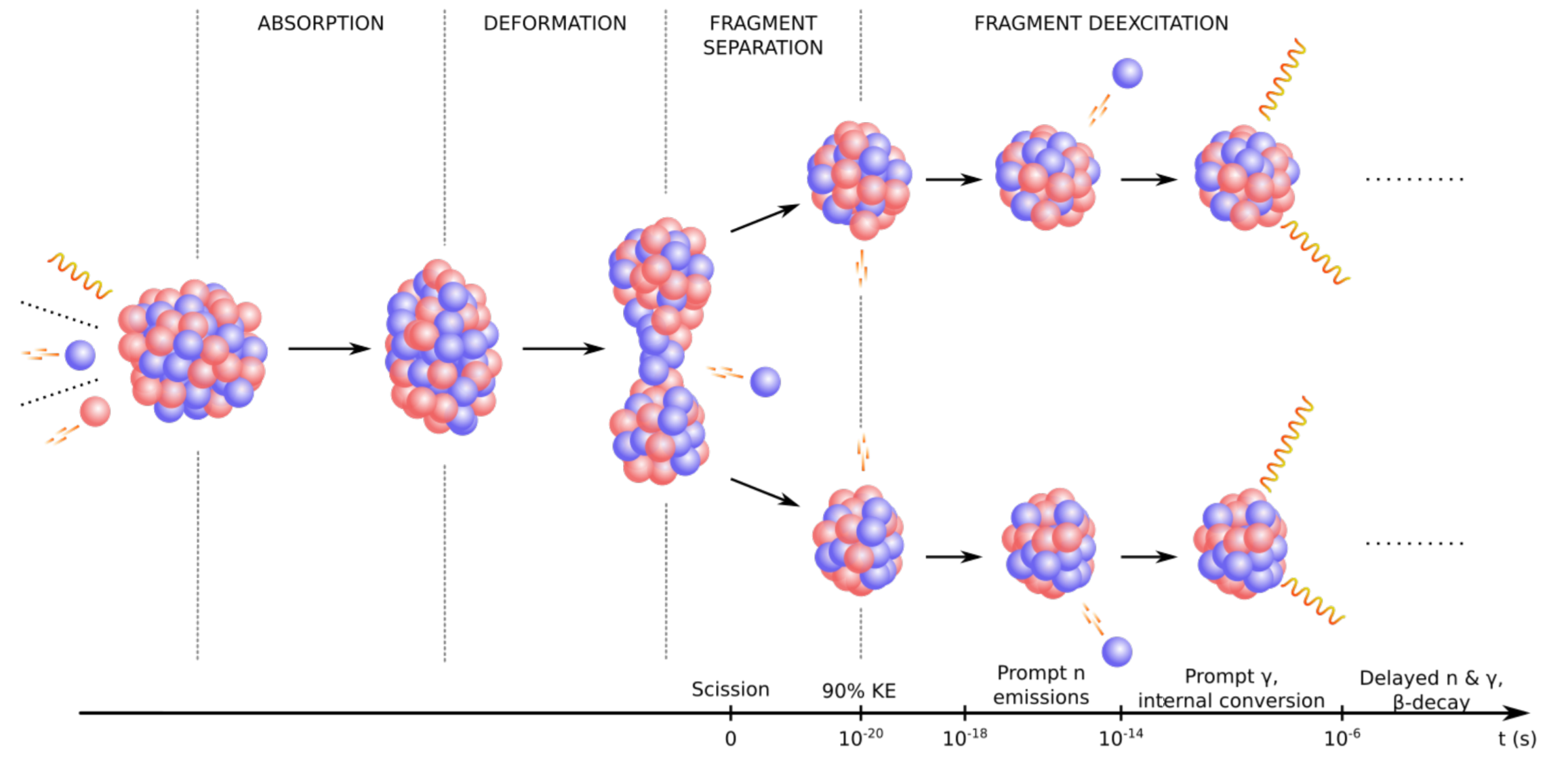Fission fragment yield trends


LA-UR-20-28896
Matthew Mumpower
Fall DNP
Sunday Nov. 1$^{st}$ 2020

Nuclear Data Team
Theoretical Division

Los Alamos National Laboratory Caveat
The submitted materials have been authored by an employee or employees of Triad National Security, LLC (Triad) under contract with the U.S. Department of Energy/National Nuclear Security Administration (DOE/NNSA).
Accordingly, the U.S. Government retains an irrevocable, nonexclusive, royaltyfree license to publish, translate, reproduce, use, or dispose of the published form of the work and to authorize others to do the same for U.S. Government purposes.
Why do we need fission yields?

Fission yields are needed for a variety of modern applications
Industrial applications: simulation of reactors, fuel cycles, waste management
Experiments: backgrounds, isotope production with radioactive ion beams (fragmentation)
Science applications: nucleosynthesis, light curve observations
Other Applications: national security, nonproliferation, nuclear forensics
The importance of understanding trends

In particular, trends in yields across the chart of nuclides are very important
An understanding of trends can help us benchmark fission models
And help us to extrapolate or interpolate in regions where data is not available
We study trends in the context of the Finite-Range Liquid-Drop Model (FRLDM)
A basic picture of fission

Follow progression of the nucleus from compact to highly elongated shapes
Fragment yield calculation

Ensemble of fission events leads to the cumulation of the yield curve ($^{235}$U + n$_{\rm{therm}}$)
Relies on geometric splitting argument for the scission configuration
Mass and charge yields both well reproduced


236-U Y(Z,A) yield

250-U Y(Z,A) yield

260-U Y(Z,A) yield

270-U Y(Z,A) yield

Number of Peaks

Count the number of peaks in the mass yield, $Y(A)$, distribution
Rather smooth variation in number of peaks across chart of nuclides.
$r$-process region: 2 or 3 peaks are the norm given our prediction of fission hot spots
Measure of Asymmetry

Measure the distance in $A$ between the maxima of $Y(A)$ and $Y(A_{\rm f}/2)$
Abrupt changes can be seen when the maxima shift from symmetric to asymmetric
Symmetric followed by asymmetric distributions can be expected in $r$-process simulations
Extent of Y(A) Distribution

Measure the spread of the daughter products in $A$
Strong dependence can be seen with the fission system
Wiggles in the yield (number of peaks or asymmetry) don't matter if the distribution is wide!
Impact on $r$-process abundances

Abundance output using common old nuclear fission data and our new model predictions
Co-production of light nuclei from $Z\sim 45$ to the actinides (dynamical merger ejecta only!)
Universality may extend further down to lighter nuclei than commonly accepted in the literature
Improvements to this approach


M. Verriere: first theoretical prediction of odd-even staggering using a particle number projection technique
We also obtain the charge polarization of the nascent fragment distributions in agreement with experiment
Special thanks to
My collaborators
J. Barnes, E. Holmbeck, P. Jaffke, T. Kawano, K. Lund, G. C. McLaughlin, P. Möller, J. Randrup, N. Schunck, D. Shaw, T. Sprouse, R. Surman, N. Vassh, M. Verriere, R. Vogt & Y. Zhu
▣ Student ▣ Postdoc ▣ FIRE PI

FIRE Collaboration
Fission In R-process Elements
Summary
Many modern applications require a deep understanding of fission
In particular, the astrophysical formation of the heavy elements in the $r$-process
Recent calculations give insight into:
fragment yield trends ▴ Production / destruction of heaviest elements ▴ odd-even staggering in charge yields
FRIB, etc. will help to constrain nuclear models, but the heaviest elements will remain relatively inaccessible
We therefore need to keep developing and studying theoretical models of nuclear physics, especially fission
Nuclear modeling is absolutely crucial if we want to prove definitively that heavy elements such as the actinides were made in an astrophysical event
Results / Data / Papers @ MatthewMumpower.com